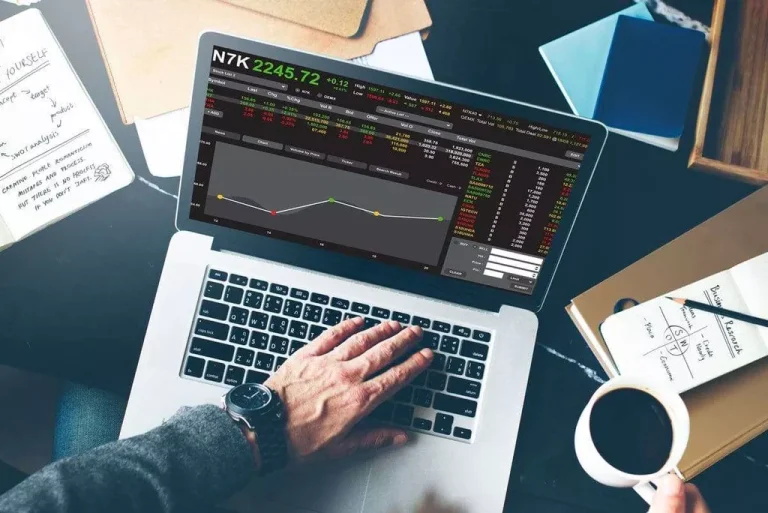Content
Exchange-traded notes are debt instruments that are not exchange-traded funds. An ETF must be registered with the Securities and Exchange Commission. In the United States, most ETFs are set up as open-ended funds and are subject to the Investment Company Act of 1940, except where subsequent rules have modified their regulatory requirements. Open-end funds do not limit the number of investors involved in the product. Investment products and services provided by Synovus are offered through Synovus Securities, Inc. (SSI) etp vs etf a registered Broker-Dealer, member FINRA/SIPC and SEC registered Investment Advisor, Synovus Trust Company, N.A. A university endowment is a collection of financial assets institutions invest in order to fund operations and secure long-term financial stability.
What is an exchange-traded fund (ETF)?
ETPs can track a wide variety of indexes across many asset classes, as well as different investment or trading strategies. Some are very well-known or broad market benchmarks or indexes, such as total stock or bond market indexes. Other ETPs track indexes that are more narrowly focused, such as those made up of companies in a Fintech specific industry sector or country, corporate bonds with particular credit ratings, or individual commodities or currencies. Some of the indexes and investment strategies used by ETPs can be quite sophisticated and might not have much performance history or, in some cases, easily accessible information.
How Are Exchange Traded Funds Bought And Sold?
And allowed to track U.S. investments.For broad-based exposure to U.K. Equities, there are several UCITS ETFs that track the FTSE 100 index, which consists of the 100 largest publicly listed companies in the country. The HSBC FTSE UCITS ETF is listed on the London Stock Exchange and https://www.xcritical.com/ trades under the ticker symbol HUKX. The ETF has an ongoing charge of 0.07% and a dividend yield of 3.62% as of January 2024. After creating and funding a brokerage account, investors can search for ETFs and make their chosen buys and sells. One of the best ways to narrow ETF options is to utilize an ETF screening tool with criteria such as trading volume, expense ratio, past performance, holdings, and commission costs.

Historical High: ETF Flows Break $1 Trillion
ETFs and other ETPs generally combine aspects of mutual funds and conventional stocks. Like stocks, ETPs are listed on a securities exchange, are publicly traded throughout the day and have prices that can fluctuate based on market forces. ETPs can also be sold short, purchased on margin or have options contracts written on them. And, like mutual funds, they track an underlying index or asset or might reflect an actively managed strategy. Exchange-traded funds represent a cost-effective way to gain exposure to a broad basket of securities with a limited budget. Investors can build a portfolio that holds one, many, or only ETFs.
Example Exchange-Traded Fund Creation/Redemption
Evaluate them on their own merits, including management costs and commission fees (if any), how easily you can buy or sell them, how they fit into your existing portfolio and their investment quality. If this is the case, an Authorized Participant (AP) will want to buy the creation basket (the underlying stocks) and will pay $32.00 and exchange it with the ETF manager for a part of the creation unit. The AP now has shares of the ETF that it can sell in the market at the market price of $32.15 and profit $0.15 per share. Leveraged ETFs – Exchange-traded funds that mostly consist of financial derivatives that offer the ability to leverage investments and thereby potentially amplify gains.
NerdWallet does not and cannot guarantee the accuracy or applicability of any information in regard to your individual circumstances. Examples are hypothetical, and we encourage you to seek personalized advice from qualified professionals regarding specific investment issues. Our estimates are based on past market performance, and past performance is not a guarantee of future performance. In turn, this process exerts downward pressure on the price of the ETF and upward pressure on the price of the underlying stocks, until no further arbitrage can be made. For illustrative purposes, this example doesn’t account for AP costs such as trading and fees, as well as hedging costs for cases in which blocks are demanded partially.
Options transactions are often complex and may involve the potential of losing the entire investment in a relatively short period of time. Certain complex options strategies carry additional risk, including the potential for losses that may exceed the original investment amount. New customers need to sign up, get approved, and link their bank account.
Actively Managed ETFs – these ETFs are being handled by a manager or an investment team that decides the allocation of portfolio assets. Because they are actively managed, they have higher portfolio turnover rates compared to, for example, index funds. ETFs are baskets of stocks or bonds that trade like regular stocks. They’re usually passively managed, meaning they seek only to match the underlying benchmark index.

Those that are actively managed rely on a fund manager to make decisions for the fund in accordance with an investment strategy rather than tracking an index. Actively managed products might have higher expense ratios than similar products tracking an index, which has the potential to eat into returns over time. While some actively managed ETFs are required to disclose their holdings on a daily basis, others disclose such information periodically like mutual funds.
- ETFs can offer exposure to a portfolio of securities representing asset classes like stocks or commodities, specific sectors like information technology, various countries and regions, or different types of bonds.
- The benefits of the ETF wrapper are now available to issuers without the requirement to disclose portfolio holdings on a daily basis.
- You’ve probably learned that keeping fees low is a big driver of successful investing.
- Investors may buy or sell ETF shares through a broker, just as they would the shares of any publicly traded company.
- Our ETFs and index capabilities provide hundreds of choices so investors can assemble their own portfolio playbooks.
- Engaging in marketing, offering or selling any fund from within the Cayman Islands to persons or entities in the Cayman Islands may be deemed carrying on business in the Cayman Islands.
When buying or selling an ETF, you will pay or receive the current market price, which may be more or less than net asset value. Generally, ETFs are transparent because they show what the underlying investments in the ETF are. This is not always the case, for example in a mutual fund, where the portfolio manager has the discretion to choose not to reveal the investments in the fund. An ETF is an open-ended investment fund that tracks the performance of a specific underlying asset be it an index, a commodity or other suitable underlying security. Knowing exactly what you own is important information you need when making financial decisions.
Other ETPs may be liquidated for various reasons as well, which in some cases can occur with little warning. Take time to understand and evaluate the portfolio and/or investment strategy of any ETPs you purchase. All ETP trading is regulated under the Securities Act of 1933 and Securities Exchange Act of 1934. For example, SPY is one of the ETFs that tracks the S&P 500, and there are fun ones like HACK for a cyber-security fund and FONE for an ETF focused on smartphones.
The index provider or advisor’s assessment of a company, based on the company’s level of involvement in a particular industry or their own ESG criteria, may differ from that of other funds or an investor’s assessment of such company. As a result, the companies deemed eligible by the index provider or advisor may not reflect the beliefs and values of any particular investor and may not exhibit positive or favorable ESG characteristics. The evaluation of companies for ESG screening or integration is dependent on the timely and accurate reporting of ESG data by the companies. Successful application of the screens will depend on the index provider or advisor’s proper identification and analysis of ESG data. The advisor may not be successful in assessing and identifying companies that have or will have a positive impact or support a given position. In some circumstances, companies could ultimately have a negative or no impact or support of a given position.
It’s important to be aware that while costs generally are lower for ETFs, they also can vary widely from fund to fund, depending on the issuer as well as on complexity and demand. Buyers and sellers trade the ETF throughout the day on an exchange, much like a stock. ETFs involve a process of Creation/Redemption, which is the lifeblood of these types of securities, and is the main differentiator from equities, as ETFs don’t start trading on a stock exchange by means of an Initial Public Offering. Additionally, ETFs carry transaction costs that should be carefully considered in the process of portfolio creations such as Bid/Ask spreads and commissions. Because ETFs are premade funds, you don’t get a say in what they invest in.
Foreign stocks, along with U.S. stocks and bonds, are widely recommended for building a diverse portfolio. International ETFs, which may include investments in individual countries or specific country blocs, are an easy — and typically less risky — way to find these foreign investments. But as with all financial products, ETFs aren’t a one-size-fits-all solution.
Similar to a smoothie, it’s one thing you can invest in that’s made up of a mix of ingredients. ETFs are available in different asset flavors (i.e., they may track different industries, sectors, or types of companies). Some ETFs provide short or leveraged exposure to reference assets and are backed by derivatives rather than cash securities. Please note that an investment in crypto assets carries risks in addition to the opportunities described above. DISCLAIMERThis article does not constitute investment advice, nor is it an offer or invitation to purchase any crypto assets.


Останні коментарі